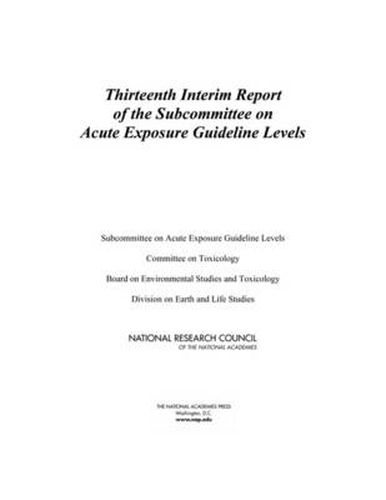Readings Newsletter
Become a Readings Member to make your shopping experience even easier.
Sign in or sign up for free!
You’re not far away from qualifying for FREE standard shipping within Australia
You’ve qualified for FREE standard shipping within Australia
The cart is loading…






Formed in 1995 by EPA, several other federal and state agencies, and several private organizations, the National Advisory Committee on Acute Exposure Guideline Levels for Hazardous Substances (referred to as the NAC) develops, reviews, and approves acute exposure guideline levels (AEGLs) for up to 400 extremely hazardous substances (EHSs). AEGLs have a broad array of potential applications for federal, state, and local governments and for the private sector. They are necessary for prevention and emergency-response planning for potential releases of EHSs, either from accidents or as a result of terrorist activities. This report includes an assessment of the NAC’s draft AEGLs documents for the following 10 chemicals: 1, 4-dioxane; chloroform; carbon tetrachloride; sulfur dioxide; cis, trans 1,-2 dichloroethylene; monochloroacetic acid; carbon monoxide; fluorine; methanol; and phenol.
$9.00 standard shipping within Australia
FREE standard shipping within Australia for orders over $100.00
Express & International shipping calculated at checkout
Formed in 1995 by EPA, several other federal and state agencies, and several private organizations, the National Advisory Committee on Acute Exposure Guideline Levels for Hazardous Substances (referred to as the NAC) develops, reviews, and approves acute exposure guideline levels (AEGLs) for up to 400 extremely hazardous substances (EHSs). AEGLs have a broad array of potential applications for federal, state, and local governments and for the private sector. They are necessary for prevention and emergency-response planning for potential releases of EHSs, either from accidents or as a result of terrorist activities. This report includes an assessment of the NAC’s draft AEGLs documents for the following 10 chemicals: 1, 4-dioxane; chloroform; carbon tetrachloride; sulfur dioxide; cis, trans 1,-2 dichloroethylene; monochloroacetic acid; carbon monoxide; fluorine; methanol; and phenol.